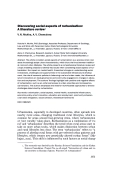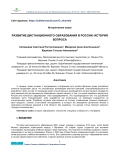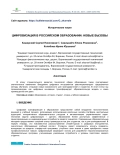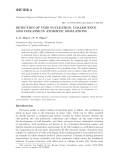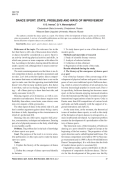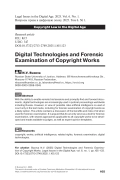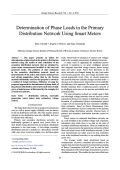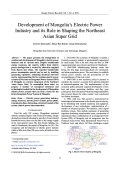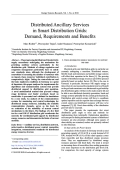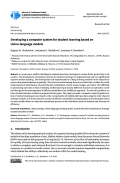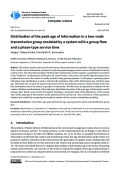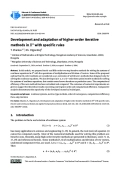The article considers social aspects of rurbanization as a process when rural areas increasingly adopt urban characteristics, which blurs the lines between traditional rural and urban lifestyles. The article presents a comprehensive literature review and a topic modeling analysis to identify key issues when considering social aspects of rurbanization: the impact on mental health, theoretical changes in understanding social interactions, challenges and opportunities in the sustainable infrastructure development, the role of economic policies in balancing rural and urban needs, the influence of smart innovations on local governance and community engagement, changes in education and employment. The authors’ findings highlight both positive and negative effects of rurbanization, such as an enhanced access to urban amenities and increased social tensions. The authors emphasize the need for multi-faceted approaches to diverse challenges determined by rurbanization.
Every year the interest in software platforms for online learning among Russian customers continues to grow, which contributes to the activation of local companies specializing in the development of such systems. Recently, domestic manufacturers have started to actively promote their solutions for distance education, but it is premature to say that the market for such products in Russia has already been fully formed. This is confirmed by the fact that Russian companies often position their developments as unique, having no competitors in the domestic market. This situation is caused not so much by the desire to successfully promote their products as by the lack of studies that would analyze and compare Russian solutions in this area in detail. We hope that this article will help to change the current state of affairs.
At a time of rapid technological development, the field of education is also undergoing significant transformation. The introduction of digital tools is revolutionizing traditional teaching methods, opening up new opportunities for teachers and students. In this article, we will analyze how digital innovations are transforming the educational model and what benefits they provide.
Extraction of required information from atomic configurations is crucial for efficient use of molecular dynamics (MD) simulations, and automating this process allows the collection of statistical data to develop and validate physical models and data-driven approaches. Here we update the previously developed pore searching algorithm to automatically detect the events of void nucleation, collapse and coalescence by comparing pairs of atomic configurations. We calculate an intersection matrix, which shows common regions between voids of current and previous time frames, and analysis of this intersection matrix gives a numerical criterion for determination of the considered events. The updated algorithm is verified in the case of small MD system and further used to analyze a large MD system with many hundreds of voids. The predominance of void collapse is confirmed in the case of uniform triaxial tension of solid aluminum, while void coalescence instead of collapse is detected in the case of a more complex loading with axial compression and lateral tension. This dependence of the predominant mechanism on the loading path correlates with previous finite element analysis in the literature. Another interesting finding is a continuing nucleation and collapse of voids far beyond the fracture beginning at a level of negative pressure much lower than the spall strength, which can be attributed to a developed defect structure of material produced by plastic growth of voids.
The authors consider the dance sport as a sport. The history of the development of dance sports and its current state are presented. A review of scientific publications on this topic was conducted on the website of Elibrary. Different directions of sports dances are considered.
With the ability to enable remote trial sessions and promptly find and forward documents, digital technologies are increasingly used in judicial proceedings worldwide including Russia. However, in view of possible risks artificial intelligence is used at court only in the test mode, including for forensic examination of copyright works as a likely option. The article contains a discussion of the benefits and risks of AI when used for forensic examination. It is argued that AI can only serve as a tool for forensic examination, with shared approaches applicable to all copyright works to be developed and made available to judges, as well as expert opinion templates.
The paper presents an option for determination of phase loads in the primary distribution network using the results of state estimation of the secondary distribution network that are obtained by smart meter measurements installed at the load and generator nodes. The problem of state estimation in the secondary distribution network based on measurements of the active and reactive nodal powers and voltage magnitudes rather than by the Newton method traditionally used for this purpose is solved by a method of simple iterations. Efficiency of using the proposed approach for determination of phase loads of the primary distribution network for each hour of daily curve of nodal powers is illustrated by the example of a 32-node test network.
The paper presents the background of creation and development of Mongolia’s electric power industry and its current state. Despite considerable energy resources, the country suffers from electric power shortage that is covered by electricity supplied from Russia and China. The expected considerable power consumption growth can be met by doubling generating capacities, enhancing electrical networks and by interconnecting the five existing electric power systems (EPSs) into an Integrated Power System (NPS) of Mongolia as a future component of the Northeast Asian Super Grid. To accomplish these tasks, we propose a number of conceptual structural and technological models for the development of Mongolian electric power systems that can form a basis for the future Integrated Power System of Mongolia.
The progressing distribution of the electricity supply necessitates redesigning the mechanism for providing ancillary services particularly by the distribution grid. Methods of voltage regulation and congestion management particularly have to satisfy new standards since, although the development of renewables is increasing the number of resources with an impact, these resources’ individual contribution is comparatively slight. Taking the state-of-the-art and the basic regulatory conditions in Germany as a point of departure, this paper analyzes the requirements for algorithms and communication systems that provide distributed support to distribution grid operation. A novel mathematical method that prevents voltage range deviations and feeder overloads based on sensitivities is presented and validated in simulations by a case study. An analysis of the communications systems for monitoring and control technologies for distributed energy resources, including the available communication channels, serves as the basis for an evaluation of the suitability of current control mechanisms in the future. The findings of a live field test in a real 110 kV distribution grid corroborate the necessity for coordinated grid support by distributed energy resources and demonstrate the limits of current methods.
In recent years, artificial intelligence methods have been developed in various fields, particularly in education. The development of computer systems for student learning is an important task and can significantly improve student learning. The development and implementation of deep learning methods in the educational process has gained immense popularity. The most successful among them are models that consider the multimodal nature of information, in particular the combination of text, sound, images, and video. The difficulty in processing such data is that combining multimodal input data by different channel concatenation methods that ignore the heterogeneity of different modalities is an inefficient approach. To solve this problem, an inter-channel attention module is proposed in this paper. The paper presents a computer vision-linguistic system of student learning process based on the concatenation of multimodal input data using the inter-channel attention module. It is shown that the creation of effective and flexible learning systems and technologies based on such models allows to adapt the educational process to the individual needs of students and increase its efficiency.
This article continues the cycle of works by the authors devoted to the problem of the age of information (AoI), a metric used in information systems for monitoring and managing remote sources of information from the control center. The theoretical analysis of information transmission systems requires a quantitative assessment of the “freshness” of information delivered to the control center. The process of transferring information from peripheral sources to the center is usually modeled using queuing systems. In this paper, a queuing system with phase-type distributions is used to estimate the maximum value of the information age, called the peak age. This takes into account the special requirement of the transmission protocol, which consists in the fact that information enters the system in groups of random size. For this case, an expression is obtained for the Laplace–Stieltjes transformation of the stationary distribution function of the peak age of information and its average value. Based on the results of analytical modeling, a numerical study of the dependence of the average value of the peak age of information on the system load was carried out. The correctness of the expressions obtained was verified by comparing the analytical results with the results of simulation modeling.
In this article, we propose fourth- and fifth-order two-step iterative methods for solving the systems of nonlinear equations in
